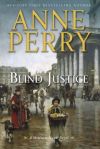 At 656 pages, the hardcover version of Lethal White could well be a lethal weapon. Happily, I bought the e-book of the fourth Cormoran Strike tale by Robert Galbraith aka J.K. Rowling, so it only robbed me of a weekend’s worth of reading. And I found it time well spent, similar to binge-watching the Cinemax mini-series of the first three books. Strike is still large, grouchy and damaged, but he has rehired his assistant, Robin Ellacott, and elevated her to partner in the London detective agency. The two pursue a complicated case of blackmail, murder and past secrets involving the dysfunctional family of government minister Jasper Chiswell (pronounced “Chizzle”), the pervy husband of another minister, and socialist rabble-rouser Jimmy Knight and his mentally ill brother Billy. The cast is Dickensian, the plot smartly tangled and digressive, the writing detailed and atmospheric. Throughout, Robin contends with panic attacks left over from her serial killer encounter, as well as her selfish jerk of a husband. Meanwhile Strike deals with girlfriends past and present, all the while mulling over his attraction to Robin. Just when you think they’re about to get sorted, something or someone intervenes, and there goes another hundred pages. Still, I hope it’s not another three years before the next book. Cormoran Strike is as addictive as Harry Potter.
At 656 pages, the hardcover version of Lethal White could well be a lethal weapon. Happily, I bought the e-book of the fourth Cormoran Strike tale by Robert Galbraith aka J.K. Rowling, so it only robbed me of a weekend’s worth of reading. And I found it time well spent, similar to binge-watching the Cinemax mini-series of the first three books. Strike is still large, grouchy and damaged, but he has rehired his assistant, Robin Ellacott, and elevated her to partner in the London detective agency. The two pursue a complicated case of blackmail, murder and past secrets involving the dysfunctional family of government minister Jasper Chiswell (pronounced “Chizzle”), the pervy husband of another minister, and socialist rabble-rouser Jimmy Knight and his mentally ill brother Billy. The cast is Dickensian, the plot smartly tangled and digressive, the writing detailed and atmospheric. Throughout, Robin contends with panic attacks left over from her serial killer encounter, as well as her selfish jerk of a husband. Meanwhile Strike deals with girlfriends past and present, all the while mulling over his attraction to Robin. Just when you think they’re about to get sorted, something or someone intervenes, and there goes another hundred pages. Still, I hope it’s not another three years before the next book. Cormoran Strike is as addictive as Harry Potter.
 There’s good news and sad news about Wild Fire (St. Martin’s Press, digital galley), Ann Cleeves’ eighth entry in her stellar Shetland Island series. The sad news is that Cleeves says this is the last Shetland book, the good news being that police detective Jimmy Perez finishes strong. When the body of a nanny is found hanging in the Fleming family’s barn, suspicion falls on the Flemings, outsiders with an autistic son. But then designer Helena Fleming reveals that she has found disturbing sketches of a gallows, and the dead girl turns out to have a complicated past and local romantic entanglements. Speaking of which, Perez’s boss and occasional lover, Willow Reeves, arrives from Inverness to head the investigation. When another murder occurs, Cleeves crafts the village equivalent of an atmospheric locked-room mystery — the closed-community puzzle. The few suspects all have means and motives, and your guess is as good as mine. Oh, I’m going to miss Shetland.
There’s good news and sad news about Wild Fire (St. Martin’s Press, digital galley), Ann Cleeves’ eighth entry in her stellar Shetland Island series. The sad news is that Cleeves says this is the last Shetland book, the good news being that police detective Jimmy Perez finishes strong. When the body of a nanny is found hanging in the Fleming family’s barn, suspicion falls on the Flemings, outsiders with an autistic son. But then designer Helena Fleming reveals that she has found disturbing sketches of a gallows, and the dead girl turns out to have a complicated past and local romantic entanglements. Speaking of which, Perez’s boss and occasional lover, Willow Reeves, arrives from Inverness to head the investigation. When another murder occurs, Cleeves crafts the village equivalent of an atmospheric locked-room mystery — the closed-community puzzle. The few suspects all have means and motives, and your guess is as good as mine. Oh, I’m going to miss Shetland.
 A Forgotten Place (HarperCollins, digital galley) is a truly memorable installment of Charles Todd’s series about spirited British nursing sister Bess Crawford. World War I may be over, but many soldiers are still reliving the horrors of the trenches, including the Welsh vets Bess first meets at a hospital in France. Once hardworking miners, the amputees face such a bleak peacetime future that they prefer death. Hoping to help avert more suicides, Bess uses leave to check up on Capt. Hugh Williams, who is staying with his widowed sister-in-law in a back-of-beyond village in South Wales. She ends up stranded among hostile villagers when her driver takes off in his car in the middle of the night. The Gothic atmosphere is thick with suspicion and rumors, and Bess observes several mysterious events, including the secret burial of an unidentified body washed up on the beach. There’s a dark secret at the village’s heart, one that goes back decades, a secret some are willing to kill to keep.
A Forgotten Place (HarperCollins, digital galley) is a truly memorable installment of Charles Todd’s series about spirited British nursing sister Bess Crawford. World War I may be over, but many soldiers are still reliving the horrors of the trenches, including the Welsh vets Bess first meets at a hospital in France. Once hardworking miners, the amputees face such a bleak peacetime future that they prefer death. Hoping to help avert more suicides, Bess uses leave to check up on Capt. Hugh Williams, who is staying with his widowed sister-in-law in a back-of-beyond village in South Wales. She ends up stranded among hostile villagers when her driver takes off in his car in the middle of the night. The Gothic atmosphere is thick with suspicion and rumors, and Bess observes several mysterious events, including the secret burial of an unidentified body washed up on the beach. There’s a dark secret at the village’s heart, one that goes back decades, a secret some are willing to kill to keep.
 Other recent crime novels worthy of recommendation vary widely in subject and style. In Karin Slaughter’s riveting stand-alone, Pieces of Her (HarperCollins, digital galley), Andrea Cooper discovers her mother Laura has been hiding her real identity for 30 years. Her desperate road trip to find the truth of her heritage alternates with flashbacks to Laura’s harrowing past that endangers them both. In Caz Frear’s assured first novel Sweet Little Lies (HarperCollins, digital galley), the spotlight’s on a father-daughter relationship. London DC Cat Kinsella is investigating the murder of a unidentified woman when DNA provides the link to the 1998 disappearance of an Irish teen. Cat has always known her
Other recent crime novels worthy of recommendation vary widely in subject and style. In Karin Slaughter’s riveting stand-alone, Pieces of Her (HarperCollins, digital galley), Andrea Cooper discovers her mother Laura has been hiding her real identity for 30 years. Her desperate road trip to find the truth of her heritage alternates with flashbacks to Laura’s harrowing past that endangers them both. In Caz Frear’s assured first novel Sweet Little Lies (HarperCollins, digital galley), the spotlight’s on a father-daughter relationship. London DC Cat Kinsella is investigating the murder of a unidentified woman when DNA provides the link to the 1998 disappearance of an Irish teen. Cat has always known her  charming, philandering father lied about his connection to the teen back then, but she now fears he may be lying about murder. She sifts through both family history and present-day evidence for the answers. Stephen Giles goes Gothic with his twisty psychological chiller The Boy at the Keyhole (Hanover Square Press, digital galley) set in 1961 Britain. In an old country house, 9-year-old Samuel worries that his widowed mother, who left on a business trip while he was asleep, has been gone too long and isn’t coming home. Despite assurances from housekeeper Ruth, imaginative Samuel begins to suspect that Ruth has murdered his mother and hidden her body. Creepy. Agatha Christie fans should be pleased by Sophie Hannah’s third Hercule Poirot novel, The Mystery of Three Quarters (HarperCollins, digital galley). The clever puzzle begins with someone pretending to be Hercule Poirot
charming, philandering father lied about his connection to the teen back then, but she now fears he may be lying about murder. She sifts through both family history and present-day evidence for the answers. Stephen Giles goes Gothic with his twisty psychological chiller The Boy at the Keyhole (Hanover Square Press, digital galley) set in 1961 Britain. In an old country house, 9-year-old Samuel worries that his widowed mother, who left on a business trip while he was asleep, has been gone too long and isn’t coming home. Despite assurances from housekeeper Ruth, imaginative Samuel begins to suspect that Ruth has murdered his mother and hidden her body. Creepy. Agatha Christie fans should be pleased by Sophie Hannah’s third Hercule Poirot novel, The Mystery of Three Quarters (HarperCollins, digital galley). The clever puzzle begins with someone pretending to be Hercule Poirot  sending letters to four people accusing them of murder. But elderly Barnabas Pandy accidentally drowned in his bathtub, didn’t he? Or was it murder? Poirot’s little gray cells get quite the workout, as does his appetite for cake. On the even lighter side, actor Charles Paris plays sleuth again in The Deadly Habit (Severn House, digital galley). Alcoholic and middle-aged, Paris is surprised to get a part in a new West End production starring Justin Grover, an actor with whom he worked long ago but who has since become rich and famous. Although he’s trying not to drink so as to get back with his estranged wife Frances, Charles falls off the wagon at an inopportune moment, stumbling over a dead body backstage, then making a quick exit. Now he’s got to find a murderer before he becomes prime suspect or the next corpse.
sending letters to four people accusing them of murder. But elderly Barnabas Pandy accidentally drowned in his bathtub, didn’t he? Or was it murder? Poirot’s little gray cells get quite the workout, as does his appetite for cake. On the even lighter side, actor Charles Paris plays sleuth again in The Deadly Habit (Severn House, digital galley). Alcoholic and middle-aged, Paris is surprised to get a part in a new West End production starring Justin Grover, an actor with whom he worked long ago but who has since become rich and famous. Although he’s trying not to drink so as to get back with his estranged wife Frances, Charles falls off the wagon at an inopportune moment, stumbling over a dead body backstage, then making a quick exit. Now he’s got to find a murderer before he becomes prime suspect or the next corpse.






























